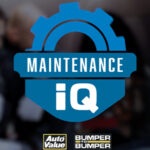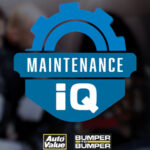How can a shock or strut in the rear of the vehicle affect the caster in the front? It could be because of rebound and compression inside of a replacement unit. If it’s worn out, it can’t rebound and compress with the same force it did when it was new.
Let’s take this car. The rear ends a little bit higher and the front is a little bit lower so it’s simulating, let’s say, a panic stop. The rear end goes up. This shocker strut should be able to control that motion, but if it can’t, it rebounds. And this changes the caster in the front of the vehicle.
If it’s even more worn out, it’s also going to change the camber on the vehicle. And the more it compresses, the more it’s going to change the tow on the vehicle. Sure, it may be fine as a static angle when you’re measuring them in the alignment bay. But, once that customer hits the road with worn out [inaudible 00:01:07] control, front or rear, it doesn’t matter, it’s going to change the dynamics of the vehicle and change the caster.
In other words, as the front end compresses, you’re getting more positive caster. More positive caster can make the steering feel a little indecisive, and it may cause play in the steering, and a feel that the customer may not be comfortable with.
Keep this in mind, that yes, a shock in the rear that’s worn out, that can’t rebound and compress like it did when it was new, it can affect the alignment angles. I’m Andrew Markel. Thank you very much.

